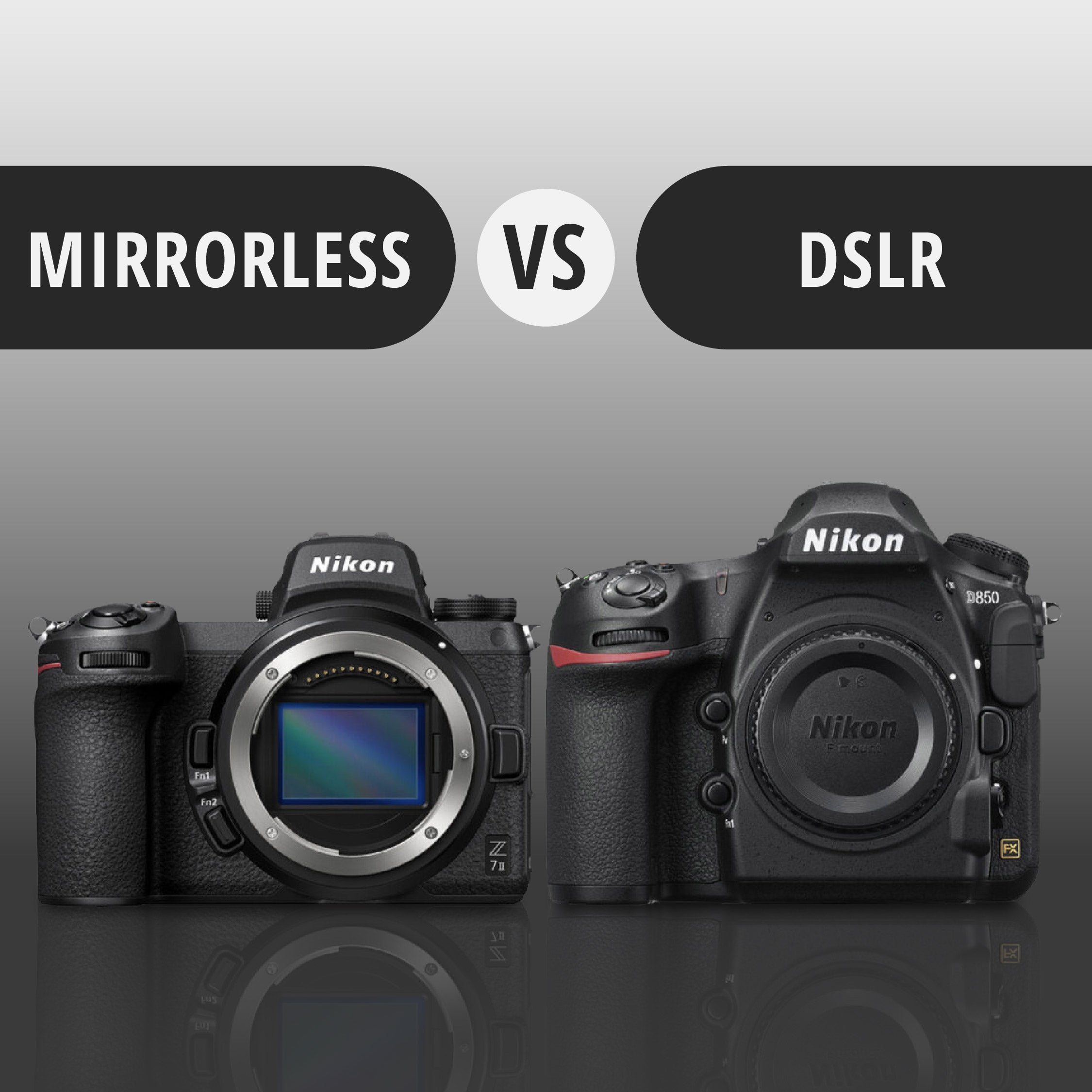Switching from a traditional DSLR (Digital Single-Lens Reflex) camera to a mirrorless camera offers a range of benefits that cater to the evolving needs of modern photographers. Many DSLR users are reluctant to make the switch to mirrorless cameras due to concerns about a steep learning curve, the investment they have made in their existing DSLR gear, and the familiarity of an optical viewfinder. We're here to debunk these initial hesitations with these five reasons to go mirrorless.
1. Sleek Compact Design
One significant advantage is the reduction in size and weight. Mirrorless cameras eliminate the need for the bulky mirror and optical viewfinder found in DSLRs, resulting in a more compact and portable design. This makes mirrorless cameras ideal for photographers who prioritize mobility and want to capture high-quality images without the burden of carrying heavy equipment.

2. EVF
Another key benefit is the electronic viewfinder (EVF) found in mirrorless cameras. Unlike the optical viewfinder of DSLRs, the EVF provides a real-time preview of the final image, allowing photographers to see the exposure, white balance, and depth of field adjustments before taking the shot. This feature aids in achieving more accurate compositions and reduces the need for post-processing adjustments. Additionally, the absence of a moving mirror in mirrorless cameras often results in faster and more precise autofocus, contributing to improved overall performance.
3. Improved Lens Design and Adaptability
Mirrorless cameras have ushered in a new era of lens design, marked by notable improvements. One significant advantage is the shorter flange distance. With the removal of the mirror and optical viewfinder, mirrorless cameras can position lenses closer to the image sensor, allowing for more compact and lightweight lens designs. This not only enhances the overall portability of the camera system but also facilitates the creation of lenses with wider apertures, improved optical performance, and reduced distortion.

It also has enabled lens designers to explore new possibilities, resulting in the development of lenses with advanced features such as faster autofocus and enhanced image stabilization. This promotes the opportunity for diverse lens options, as manufacturers can design lenses with a broader range of focal lengths and optical characteristics. These advancements offer photographers a richer array of choices and push the boundaries of what is achievable.
The adaptability of mirrorless cameras is noteworthy as well. With shorter flange distances, these cameras can accommodate a variety of lenses through the use of adapters. Photographers can use their existing DSLR lenses on a mirrorless body, preserving their investment in high-quality glass. This flexibility is particularly appealing to those who may already possess an extensive collection of lenses and wish to transition seamlessly to a new camera system.
4. A Larger Mount
The larger mount diameter in mirrorless systems allows for wider, faster, and optically superior lenses. With a more substantial opening, light can strike the sensor at more varied angles, mitigating issues like color fringing and vignetting. This, coupled with the shorter flange distance typical of mirrorless cameras, provides lens designers greater flexibility to create optics with improved corner-to-corner sharpness and reduced aberrations. The larger mount also enhances the potential for faster autofocus systems and facilitates the design of lenses with larger apertures, enabling superior low-light performance and enhanced depth-of-field control.
5. Enhanced Video Features
In terms of video capabilities, mirrorless cameras tend to outshine DSLRs. The absence of a mirror mechanism allows for continuous autofocus during video recording, leading to smoother and more professional-looking footage. Additionally, many mirrorless cameras come equipped with new standard, advanced video features such as 4K recording, high frame rates, and superior image stabilization, making them a preferred choice for videographers and content creators.

These rapid advancements in mirrorless camera technology have led to innovative features and functions. Many mirrorless models incorporate cutting-edge technologies like in-body image stabilization, eye-tracking autofocus, and enhanced low-light performance. These features mentioned above contribute to the overall convenience and creative possibilities that mirrorless cameras offer, making them a compelling choice for photographers on the fence about whether to switch or not.
If you’ve made the switch already, what’s been your favorite part about Mirrorless so far?

